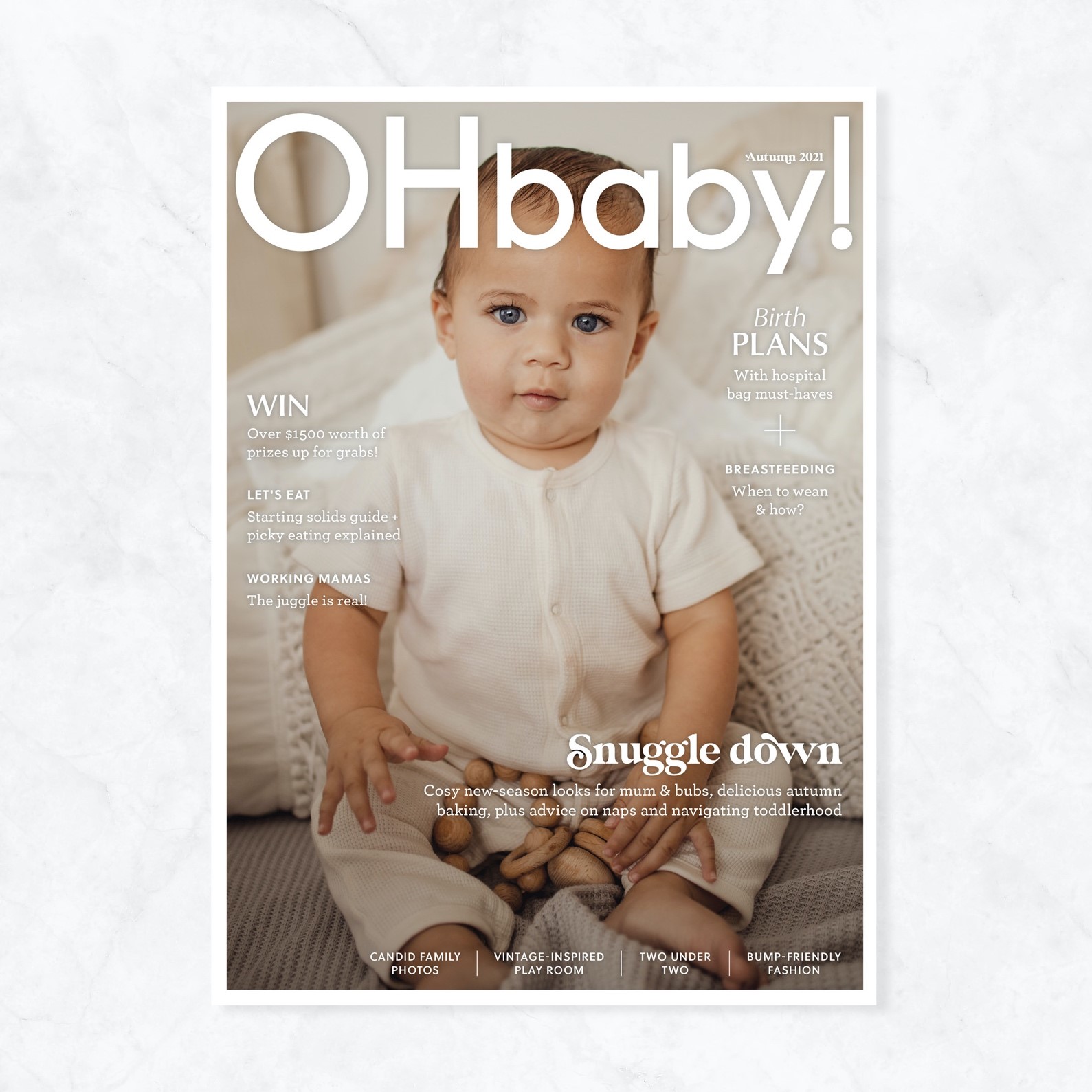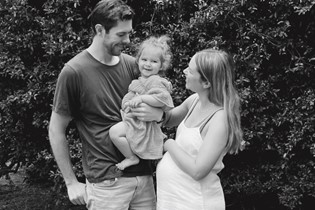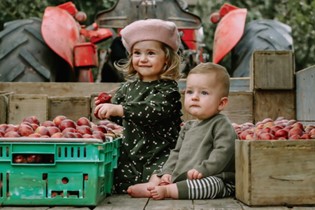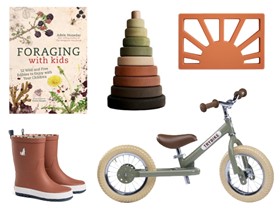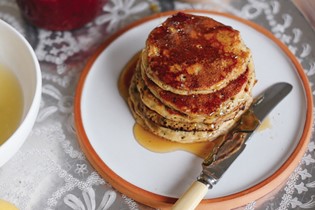When is the best time to wean your baby?

Every mother has her own unique breastfeeding journey, each with a beginning, a middle and an end. Midwife and lactation consultant Stephanie Callaghan Armstrong discusses the ins and outs of weaning.
There’s so much talk about how to breastfeed, yet often it’s hard to get an answer about what is the best way to stop. That’s because every mum and their little one's breast feeding situation is different.
The word 'wean' is defined in the Oxford Dictionary as "to accustom (an infant) to food other than its mother's milk”. So rather than weaning being about ‘stopping’ breastfeeding, the weaning definition really implies that a gradual process is the best and most natural way for baby to change their diet from breast milk to solid food.
Weaning starts at the very first feed your baby has that is not breast milk, whether that's solid food or infant formula. In an ideal world, exclusively breastfeeding baby for their first six months, before starting solids, is the recommendation of the World Health Organization (WHO). Breast milk is a superfood, filled with an almost floor-to-ceiling list (no kidding, I have a very long poster in my lactation consultation clinic!) of incredible nutritional and protective properties. Breastfeeding, with its unique sucking motion, also helps a baby's jaw develop optimally. There is no rush to introduce solids early as the nutrients in solids are less easily absorbed by baby’s immature gut. Any solids given to a baby under one are considered complementary and breast milk or formula should be baby’s main source of nutrients. The WHO also recommends baby is then breastfed together with solids into the second year of life, if possible.

Starting solids
You will know when baby starts breastfeeding a lot more frequently, seems unsatisfied with just milk, watches your family eat intently and tries to reach out for your food that it is time to slowly start adding in solids.
There are lots of ideas about ways to introduce solids but I always think the best way is to try little tastes, adding in one food at a time for a few days, like pureed apple, pear or avocado – organic if possible. Do be aware of any family history of allergies and reactions to foods, such as wheat, dairy, egg or nuts, when baby is under one year and if you are concerned, consult someone who specialises in allergies for advice about this.
Some experts recommend baby-led feeding where baby picks up and munches soft finger foods in small
baton-shaped pieces; a method which is said to reduce food fussiness. Some mums (like me!) do both baby-led and feeding with a spoon.
Watch for baby’s cues – if they accept food on a spoon, then they are ready for that. If their tongue thrusts it out and baby prefers to drink milk, leave it a bit longer until they seem ready. There is no rush and no exact right or wrong way to wean baby onto solids. Keep it relaxed and make it fun with different colours of foods and happy games as you feed.
Introducing iron-rich foods, like wholegrain brown rice, chicken, fish, red meat, legumes or egg yolks, by nine months is recommended as baby’s iron stores built up in pregnancy decrease by this time and breast milk doesn’t provide enough.

Stopping breastfeeding
As a midwife and lactation consultant passionate about breastfeeding, I am always encouraging mums to breast-feed as long as they can, but am also supportive about mums (along with their whānau) being able to make the best choices for themselves and baby. I breastfed my own four babies for different lengths of time and slowly weaned until they stopped asking and feed times got shorter and shorter.
There are different ways to wean and different reasons for mothers' decisions to stop breastfeeding if it hasn’t happened naturally already. Reasons range from going back to work or study, milk supply decreasing, a feeding strike, a mum's personal preference to feed for a certain length of time, or even sudden events like illness or needing surgery.
The consensus is that gradually weaning baby off the breast is best for both you and baby. A process called ‘involution’ happens when baby is weaned off the breast. This is where the milk ducts (that are like mini factories for milk), break down and are replaced with fat cells called adipocytes. It’s a pretty complex process but in a nutshell, a slow weaning process is kinder to your breasts so they slowly involute, rather than very quick breakdown changes within the breast structure. It is also gentler on baby, with their gut able to adjust more gradually to their new diet.
If you abruptly wean, the saltiness some report in breast milk (milk that babies often reject) is said to be due to the rapid breakdown process. Studies I’ve read have suggested it takes about six days for the body to break down your milk ducts but this is reversible for about 48 hours if a mum stops removing milk then resumes stimulation by feeding or expressing. Never think it’s too late to change your mind though, some mums report having small amounts of milk expressible from their breasts even years later!
Feeding strikes explained
A feeding strike is a baby's abrupt refusal to feed. There are many reasons why this can happen, such as teething, illness (like an ear infection or a virus), or frustration with a sudden low milk supply. In most cases it's reversible and isn't a sign baby wants to suddenly ‘give up.’ Maintain your supply by expressing in place of usual breastfeed times. Offer lots of skin-to-skin contact and keep offering the breast away from distractions. If bottle-feeding expressed milk, hold baby close and try to latch baby mid-feed – it often works! Getting baby checked by a doctor for any medical causes and asking a breastfeeding professional (like a lactation consultant, midwife or La Leche League) for support are the best things to do if the strike continues more than a day or two.
Ways to reduce breastfeeding
If you are in no hurry to stop, the 'don’t offer but don’t refuse' method is the most well known and recommended weaning method to gradually wean babies as they get older. Babies and toddlers tend to start eating more solids, drinking water and demanding breast milk less often as they grow. If they ask for a breastfeed and are on solids, offer water first to see if they will accept that instead.
If your breasts feel full during the weaning process, you can always express for comfort and use the milk in baby’s solids or freeze it for emergencies.
Some mums want to wean to partially breastfeed and replace feeds with a bottle for the last feed at night, with the rationale of Dad or a family member helping so Mum doesn’t always have to do bedtime or night feeds. It is always best to try and give expressed breast milk if possible, if wanting to introduce the bottle (especially in the earlier days of breastfeeding as your milk supply can decrease if you start to wean baby onto infant formula).
Going back to work
Instead of stopping day feeds all together, explore your options – perhaps you could pump on your non work days or maybe you can comfortably express at work. Family-friendly workplaces should ideally be set up for this and if not, maybe ask for somewhere to express and be the one who creates a supportive culture for pregnant and breastfeeding mums at your work place. I cheer on the companies that have fridges for breast milk, different chairs to accommodate pregnant mums, and, where possible, provide flexible work hours. In return they get loyal, happier staff who are more likely to return to work after maternity leave.
If baby is going to be cared for in a daycare centre, they are exposed to more viruses and bacteria that breast milk protects them from, so having your expressed milk for them to drink there can mean less sick days away. Some mums are even able to go in to the centre to breastfeed baby, or a caregiver could bring baby to work for feeds.
Some mums who go back to work feed baby only in the evening and/or morning and not during the day, while others may work evenings and breastfeed in the day. If you take it slow, there should be plenty of milk to feed baby at the time they need it and your breasts will remain comfortable during the non-feeding times.
Gradual is best
Dropping breastfeeds one feed at a time (and replacing with solids, water or infant formula) or stretching feed times out are the best ways to wean gradually. Express only for comfort and allow your breasts (and the supply and demand message) to adjust until you stop experiencing symptoms of engorgement, discomfort or over-fullness. A gradual involution can then take place and it is gentler for both you and baby. You can then keep dropping one feed at a time every 2-6 days until you either stop breastfeeding completely or are partially feeding.
If you are wanting to more actively wean with an end goal of either reduced feeding or stopping altogether, it is still best to avoid any abrupt weaning. Creating a timeline plan as many weeks out as possible can be helpful to slowly decrease breastfeeds and keep track.
Sometimes there is a need to abruptly wean or wean for a short period of time, for example if a mum needed to start a course of medication that could be harmful to baby or had to have a general anaesthetic. In this situation you can be prescribed medication to help ‘dry up’ your supply by your midwife or doctor (if full weaning is needed or desired when baby is little and natural methods are not reducing the supply so well).
If a mum wished to resume breast-feeding afterwards, I’m an advocate for 'pump and dump'. I once needed medication that was dangerous for my baby if passed through my milk. I was encouraged to give up breastfeeding as it was uncertain how long I may need to express. I persisted – pumping and dumping while on the medication – and was so glad I did as my baby went back on the breast four months later and went on to feed for a few years after that.
With quick-style weaning, do be aware of the risk of developing mastitis from engorged breasts. Wearing a firm bra and expressing for comfort will help avoid lumps, especially if it is early on in your lactation. Massage, hot and cold packs and cold cabbage leaves can help ease discomfort. Vitamin C doses, 1000mg three times a day, are shown to be a natural way to help combat early breast infections and are protective for mastitis. If you do feel mastitis symptoms (red patch, fever, painful lumps), always get your doctor, midwife or lactation consultant to assess you. Sometimes antibiotics are required to stop the problem from getting much more serious.
Toddler weaning
For toddlers, breastfeeding is not only a nutritional activity but also a way to reconnect or ‘refuel’ emotionally with Mum or be comforted as they go about their day. Some toddlers continually ask for short feeds throughout the day and night, and understandably a few set times of the day probably suits Mum better. Distraction techniques can help a toddler to stop this, or replacing the feeds with cuddles or saying to them "No feed now, feed later”. If their need is met in another comforting and connecting way, a toddler will decrease their breastfeeding demands eventually.
You could try dressing in less breastfeeding-friendly clothing at the times you want to avoid feeding your toddler, so it’s not actually possible for your little one to breastfeed. Some will tantrum so maybe a few days close to home is a good idea while you all adjust.
Even a little makes a difference
I always tell the families I work with that continuing to partially breastfeeding – even just one feed or bottle of expressed milk a day – for as long as they can is beneficial, enabling baby to receive the lifelong benefits of breast milk nutrition.
If you are having difficulties with a low milk supply, get professional help early because there are lots of ways to increase your supply with galactagogues (nothing to do with Starwars, but the name for natural milk boosters) like fenugreek, blessed thistle, nursing tea, protein-rich foods or herbal and homeopathic treatments. Sometimes medication can also be prescribed. Screened breast milk donations are also becoming increasingly available – check out the internet and Facebook groups for more information.
Keep in mind that ‘the days are long but the years are short’ in this season and before we know it, our babies are big little people, then all grown up and this time has passed. Everything you do to nurture your baby in their first 2000 days (when their brain is growing the fastest) is shown to make a huge difference for the rest of their life. Gentle approaches to any changes like weaning are always best if you can. Well done, amazing mummies!

Stephanie Callaghan Armstrong is a mum of five, including her stepson, and an LMC midwife and lactation consultant with over 20 years’ experience. She and her husband, Dr Mikey, also own BabyMed NZ – a breast pump sales, rental and baby products business. Find them at babymed.co.nz.
Photo: @LIZAASTARK VIA TWENTY20

AS FEATURED IN ISSUE 53 OF OHbaby! MAGAZINE. CHECK OUT OTHER ARTICLES IN THIS ISSUE BELOW
